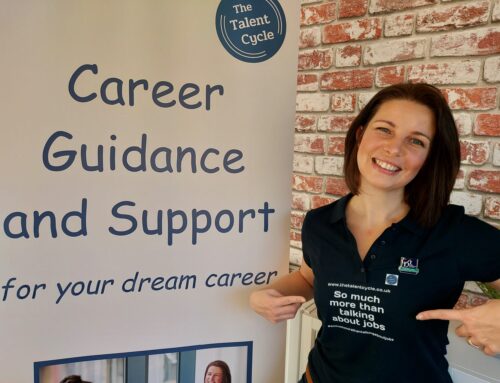Careers leaders in most schools will probably have at most one or two colleagues who they line manage: the careers administrator and (where schools employ their own internal careers adviser) the careers adviser.
The situation is different in schools that have developed a ‘distributed leadership’ approach, with a senior, strategic leader for careers line managing two or three middle, operational leaders.
In colleges, careers leaders are even more likely to be managing staff and, in some cases, may be responsible for a whole department or even several departments if the role is undertaken by an assistant principal or person at a similar level.
Regardless of how many people you directly manage, part of your role as their manager is to support their development and ensure that they have the right CPD to do their job.

Your relationship with most of the colleagues who contribute to your careers programme will be one of ‘project management’, but it should still involve helping them to identify any training and CPD needs in relation to their work on the careers programme.
In schools the team may include form tutors giving information and advice, and referring students for career guidance; PSHE and careers teachers, delivering careers lessons; subject teachers linking their teaching to careers.
In colleges the team might similarly include: personal tutors giving information and advice, referring students for career guidance, and teaching elements of career learning in the personal development programme; course lecturers linking their teaching to careers; admissions staff providing pre-entry guidance.
But the list of colleagues whose CPD in relation to careers work you could support does not end there.
Some of your fellow middle leaders with whom you work on the careers programme might want to further their own professional development in relation to their work on the programme. The list of such colleagues could include: in schools, the SENCO, the head of sixth form, and the librarian/learning resource centre manager; in colleges, the head of learner support, the head of employer engagement and the head of admissions. You might also signpost the link governor for careers, and the senior leader with overall responsibility for careers, to relevant CPD opportunities.
We know that, in addition to the formally planned careers activities and interventions, students are also influenced by informal conversations with their teachers and tutors. It is important, therefore, that all members of staff are kept up to date with the main developments in education, training and the labour market, and informed about the careers programme and support available in the school or college.
Therefore, there will be occasions when the whole staff will need briefing and CPD on the careers programme and implications of developments in learning and the world of work.
Identifying CPD needs
Training needs can be identified in two main ways:
- Top down, where the careers leader identifies skills and knowledge gaps and seeks ways to fill them by providing CPD; and
- Bottom up, where individuals approach you asking for help in developing their skills and knowledge.
In practice the top down and bottom up approaches often work together as ideas emerge out of discussions and meetings and volunteers come forward to pick them up.
One of your responsibilities as the careers leader is to have a strategic overview of the skills and knowledge that are needed for your programme.
As you plan your programme and then review and evaluate it you should think about where a lack of skills or knowledge is holding you back or limiting your programme. Perhaps you would like to run an enterprise competition, but the staff in your school or college are not confident in facilitating small groups as part of this kind of experiential activity. Or maybe you feel that you would like someone to run a session on the use of social media in your career, but no one does anything other than dabble on Facebook.
In such situations you have a range of options. You might bring in a specialist to deliver the activity, see if you can get an employer to plug the gap or decide that someone in the school or college needs to become competent in this area. If you choose the final option, it is likely to necessitate a need for CPD.
When the need for CPD is driven by a clear strategic need it should make it easier to unlock the time and resources needed. You should identify any CPD needs that arise from improvements that you propose to make in the school or college’s development plan and discuss it with other members of the SLT if it requires a substantial investment of time.
For example, if you want to train all teachers and tutors in basic advice and guidance techniques you would probably need to agree this as a school or college priority.
Much of the CPD that you support is likely to emerge more organically. It might be based on concerns that you have about individual’s performance or on the developing interests of members of staff. For those colleagues that you line manage, the question of training and CPD needs should be included on the agenda for your regular review meetings.
For members of staff who contribute to your careers programme as a responsibility additional to their main role, training and CPD needs are likely to be identified during team meetings to review their contributions and to brief them on future activities. Their training needs are most likely to relate either to their current contributions or to things you will be asking them to do in the future.
It is also worth making some time each year to talk with all of the main contributors to your careers programmes and raising the issue of what further training and CPD they might need. Such conversations are likely to be informal and may be bound up with wider conversations about their own careers.
CPD is often a good route to boost your own career and it is in your interest to encourage others to consider whether a ‘career in careers’ might be something that they would be interested in.
 This extract is taken from The Career Leader Handbook
This extract is taken from The Career Leader Handbook
by David Andrews and Tristram Hooley

Emma Davies works within the editorial department at Trotman Publishing. Graduating from her Masters degree in 2017, she is familiar with all aspects of the student journey through university. She is passionate about helping students find the right career, and was a member of the SYP’s inaugural committee in the South West.





